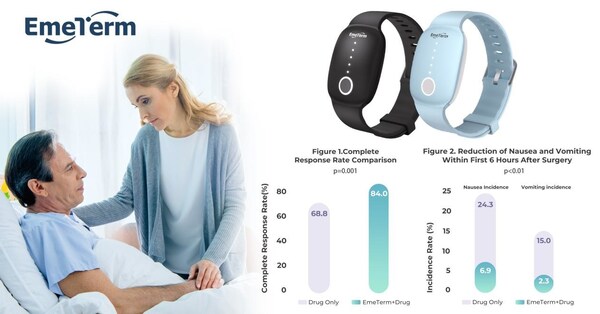Health
EmeTerm Wristband Cuts Postoperative Nausea in Major Surgeries

A recent clinical trial has revealed that the EmeTerm wristband significantly reduces postoperative nausea and vomiting (PONV) in patients undergoing major orthopedic surgeries, such as total hip or knee arthroplasty. Conducted by WAT Medical Enterprise Ltd., the study has been published in the Journal of Bone & Joint Surgery on November 3, 2025.
The goal of the trial was to assess whether combining the EmeTerm wristband with standard antiemetic therapy could improve PONV prevention compared to conventional methods alone. The randomized controlled study included 348 patients who received either standard antiemetics—namely dexamethasone and ondansetron—or the antiemetics in conjunction with the EmeTerm device during spinal anesthesia.
Results demonstrated a marked improvement in recovery quality for patients utilizing the EmeTerm wristband. The combination of the wristband and antiemetic medication led to a complete response rate of 84.0%, compared to 68.8% for medication alone, with a statistically significant p-value of 0.001.
Key Findings of the Study
The study highlighted critical changes in the incidence of nausea and vomiting within the first six postoperative hours. The EmeTerm wristband reduced nausea from 24.3% to 6.9% and vomiting from 15.0% to 2.3%. Such results underscore the device’s potential to enhance the effectiveness of existing antiemetic protocols in orthopedic settings.
The EmeTerm wristband employs a method known as transcutaneous electrical acupoint stimulation (TEAS), targeting the median nerve at the PC6 position on the wrist. This innovative approach modulates nausea pathways through neural stimulation, offering a non-pharmacological option for managing PONV.
Implications for Perioperative Care
With medical device certifications from the FDA, Health Canada, and TGA, WAT Medical Enterprise is also renewing its CE certification, expected to be finalized by the end of the first quarter in 2026. The study’s findings provide robust evidence that integrating the EmeTerm wristband into perioperative care can lead to faster and more comfortable patient recoveries while minimizing reliance on medication.
As healthcare trends shift towards multimodal, patient-centered recovery strategies, the EmeTerm wristband stands out as a promising tool. This device not only enhances recovery outcomes but also aligns with broader efforts to improve patient care across various medical disciplines.
In summary, the EmeTerm wristband’s efficacy in reducing postoperative nausea and vomiting represents a significant advancement in orthopedic surgical care, paving the way for more effective management of PONV and improved overall patient experiences.
-

 Lifestyle3 months ago
Lifestyle3 months agoHumanism Camp Engages 250 Youths in Summer Fest 2025
-

 Sports3 months ago
Sports3 months agoDe Minaur Triumphs at Washington Open After Thrilling Comeback
-

 Business4 months ago
Business4 months agoKenvue Dismisses CEO Thibaut Mongon as Strategic Review Advances
-

 Sports4 months ago
Sports4 months agoTupou and Daugunu Join First Nations Squad for Lions Clash
-

 Top Stories4 months ago
Top Stories4 months agoColombian Senator Miguel Uribe Shows Signs of Recovery After Attack
-

 World4 months ago
World4 months agoASEAN Gears Up for Historic Joint Meeting of Foreign and Economic Ministers
-

 Business4 months ago
Business4 months agoOil Prices Surge Following New EU Sanctions on Russia
-

 Health3 months ago
Health3 months agoNew Study Challenges Assumptions About Aging and Inflammation
-

 Entertainment3 months ago
Entertainment3 months agoDetaşe-Sabah Violin Ensemble Captivates at Gabala Music Festival
-

 Entertainment3 months ago
Entertainment3 months agoBaku Metro Extends Hours for Justin Timberlake Concert
-

 Business4 months ago
Business4 months agoU.S. House Approves Stablecoin Bill, Sends to Trump for Signature
-

 Top Stories4 months ago
Top Stories4 months agoRethinking Singapore’s F&B Regulations Amid Business Closures









